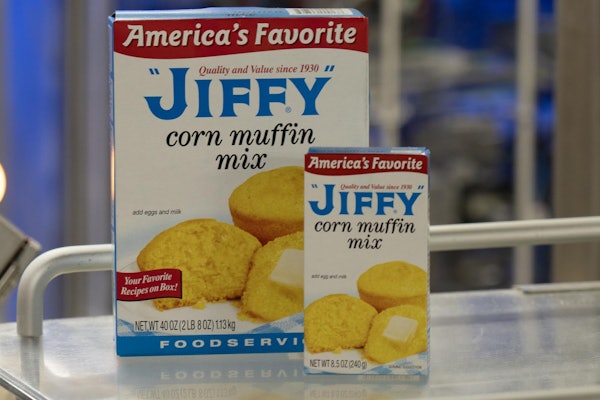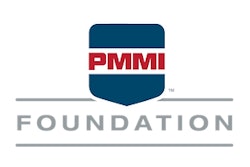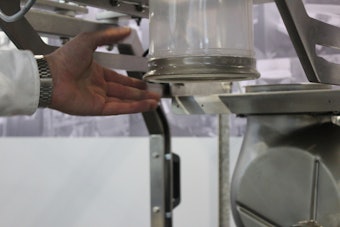Part 1 of this series asserted that pallets are assets deserving of detailed specifications. Part 2 of the series asserted the importance of choosing pallet vendors that can consistently deliver against those specifications. Here, Part 3 asserts the importance of storing pallets under conditions that enable them to provide efficiencies and cost-effectiveness throughout supply chains. This column, however, is about the storage of empty pallets, as opposed to the storage of pallet loads. The latter has particulars that qualify for a separate article.
An initial decision is the designation of a storage location. The ideal choice is inside the facility, however the choice is more involved than choosing an area that happens to be available. Thought should be given to the distance between the storage location and where pallets are loaded, i.e., end-of-line operations. That distance should be as short as feasible to minimize material handling mishaps. Establishing that advantageous distance might require that items presently occupying the target area be reassigned to a different area.
For employee safety, the pallet storage location should be a reasonable distance away from high foot traffic. Employee safety is further promoted when the pallet storage location is a reasonable distance away from the storage locations for other types of inventory.
Regardless of the inside storage location, pallets are a potential fire hazard due to their composition. A wood-fueled fire will overwhelm an inadequate sprinkler system. The National Fire Protection Association issues guidelines about the safe storage of wooden pallets. Although NFPA lacks enforcement, insurance companies are known to factor compliance into the setting of rates.
Pallet stacking is of vital importance. Height is a tradeoff between maximizing cubic space versus column stability: the higher the stack, the less stable it is. An additional recognition is that the higher the stack, the greater the potential fire hazard. Another tradeoff is that between the closeness among stacks, conserving floor space, versus adequate spacing among stacks, allowing air-flow ventilation for greater fire safety. Alignment is an associated factor, affected not only by neat horizontal placement but also by how tightly pallet dimensions fall within specified tolerances.
In further pursuit of proper stacking, different pallet types (e.g., stringer and block) should not be mixed. A shipper that uses block pallets because they are favored by the likes of Costco, Sam’s Club, and BJ’s might use stringer pallets for other customers. It’s not just a matter of easier access. Mixed stacks comprised of the same number of pallets can, nonetheless, have different heights and different stability, owing to the difference in height between a block pallet and a stringer pallet, along with their different base constructions.
On the other hand, if pallets must be stored outdoors, it should be under a roofed structure. Moisture induced by weather is the enemy of wooden pallets, in that it promotes mold growth. Mold, in addition to weakening the strength of pallets via rot, can contaminate what is loaded onto those pallets.
Outdoor pallet storage should be on a level, paved surface, for best stack stability. Storing pallets on the ground can’t provide that stability. That’s not the only difference between pavement and ground; wet ground is another cause of mold on wooden pallets.
The aforementioned stacking guidelines regarding safety also apply to outdoor storage. An additional guideline is that pallets should not be stacked against a building nor very close to one, again for fire-safety concerns.
The indoor/outdoor issue aside, companies that ship internationally on wooden pallets must deal with phytosanitation, aimed at preventing wood-boring insects indigenous to a particular nation from being introduced to other nations. The mandate is ISPM-15 (International Standards for Phytosanitary Measures). Wooden pallets must undergo insecticide treatment, the two main alternatives being heat and fumigation. Wooden pallets thus treated get to bear a certification mark, by branding or by imprint. Without that mark, shipments arriving at foreign ports will be placed in quarantine, or worse, ordered to be destroyed.
No wooden pallet management system would be complete without an inspection component. It’s not only about checking the condition of pallets, but additionally about inventory control. A practice whereby the last-received pallets are the first chosen for outbound can increase the chances that earlier-received pallets get compromised, even if only from age and various exposures. Some level of inventory rotation can yield benefits.
Since almost every company receives supplies and other inventory on wooden pallets, the management system should specify what’s to be done with them, as to their separation, disposal, or even reuse.
For all types and uses of wooden pallets, mechanical handling is preferred. But occasions arise that require manual handling. On those occasions employees run the risk of injury. After all, a pallet typically weighs more than 50 lbs., in addition to possibly having splinters, exposed fasteners, etc. In recognition, pallet management should include safe manual-handling practices, like those issued by OSHA.
In summary, wooden pallets are indispensable to commerce, and their overwhelming dominance vis-à-vis other materials, such as plastic, corrugated, and metal, means that they have no close substitute. An asset that valuable should be managed systematically.
Sterling Anthony, CPP, consults in packaging, marketing, logistics, and human-factors. A former faculty member at the Michigan State University School of Packaging, his contact info is:100 Renaissance Center, Box-176, Detroit, MI 48243; 313/531-1875; [email protected]
























